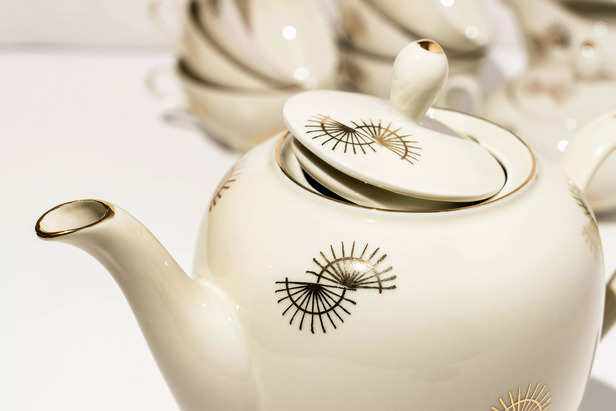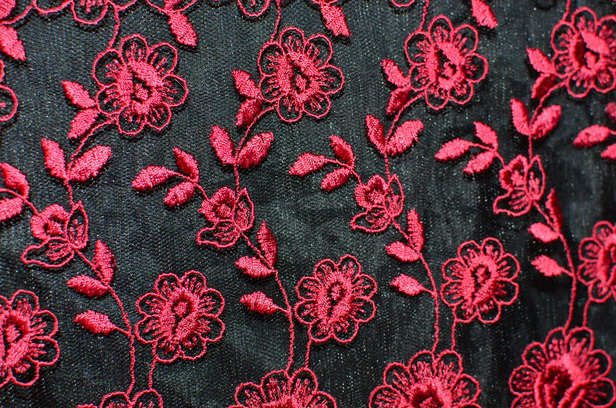How Western Brands Sell Indians Their Own Culture and Make Billions
Riya Kumari | Jan 09, 2025, 14:51 IST
( Image credit : Timeslife )
The same items we grew up surrounded by are now being repackaged, marked up, and sold back to us by Western brands like they’ve discovered some hidden treasure. And somehow, we’re lining up to buy it. This isn’t just clever marketing. It’s a full-blown cultural strategy. Western brands have found a way to take what we already own, slap on a shiny new label, and convince us it’s worth more. How do they pull it off? And why does it work so well? Let’s dive into the psychology, branding, and subtle manipulations behind this phenomenon.
Yoga didn’t start with mats, leggings, or Spotify playlists. For centuries, yogis practiced on grass, stone, or a simple cotton sheet. The focus wasn’t on accessories—it was on inner stillness. But when yoga traveled West, it shed its spiritual roots and transformed into a wellness trend, something to do between a juice cleanse and Pilates. By stripping yoga of its cultural and spiritual context, Western markets turned it into a lifestyle commodity. It became something you buy into—complete with a branded mat, designer water bottle, and matching activewear. The essence of yoga—connection and simplicity—got lost in translation, replaced by a sleek, Instagrammable aesthetic.
1. Rebranding the Everyday as Exclusive

Western brands have an uncanny ability to take what’s commonplace and reframe it as luxury. That handwoven khadi kurta your mom used to make you wear to family functions? It’s now a “heritage-inspired, sustainable capsule piece” priced at ₹20,000. The brass utensils that used to clutter your kitchen? Reimagined as "artisanal cookware" and sold for a small fortune. What’s going on here? The trick lies in repositioning. The moment something familiar is filtered through the lens of foreign validation—packaged with sleek photography, minimalistic logos, and just the right buzzwords—it feels desirable. The marketing message isn’t subtle: “This isn’t the same old thing. It’s better. And if you can afford it, so are you.” Why do we buy into this? Because exclusivity feels like power. It plays to our desire to elevate ourselves above the mundane, even when the “mundane” is part of our cultural DNA.
2. Appropriating Cultural Symbolism for the Global Shelf

Here’s where it gets tricky. Western brands aren’t just selling you stuff—they’re selling your culture to a global audience. That embroidered dupatta isn’t just fabric; it’s now “Bohemian-chic.” Haldi becomes “turmeric,” and its healing properties are suddenly revolutionary, despite having existed in every Indian household since time began.
For the global market, this is a branding goldmine. Western consumers love feeling worldly, and brands know this. The exoticism of Indian culture becomes a marketing tool—a way to make products feel unique, meaningful, and authentic. But for us, the experience is more layered. We don’t just see the product; we see the cultural significance it was stripped of to make it palatable for someone else.
3. The Psychology of Price Equals Value

Let’s talk about the pricing trap. A ₹50 chai in a street-side kulhad isn’t exciting. But the same chai, served in a “handcrafted terracotta mug” for ₹500? That’s an experience. Western brands have mastered the psychology of perceived value. By inflating prices, they convince us that what they’re selling is inherently better—even when it’s the same thing. It’s not the kulhad they’re selling; it’s the story they attach to it. The narrative of sustainability, craftsmanship, or cultural celebration becomes the justification for the markup. And the scary part? It works. Studies show we associate higher prices with higher quality, even when we know, deep down, it’s the same product. It’s a manipulation that preys on our insecurities—our need to feel we’re making the right choice, the better choice.
4. Turning Culture into Aesthetic

Here’s a question: when does culture stop being culture and start being a commodity? The moment it’s reduced to an aesthetic. Western brands often strip Indian culture of its context, repackaging it into something visually pleasing but devoid of its soul. That intricate block print saree your dadi treasured? It’s now a crop top on a runway. The deep significance of a diya or a rangoli? Reduced to “holiday decor.” This isn’t just about simplification—it’s about control. By turning culture into an aesthetic, brands can cherry-pick what fits their narrative, leaving behind the complexity, history, and emotion. What’s left is a version of Indian culture that feels sanitized, shallow, and painfully inauthentic.
5. The Cycle of Validation

And finally, let’s address the elephant in the room: why are we so drawn to this? Why do we feel tempted to buy into these repackaged versions of our own culture? It comes down to validation. For decades, colonialism and globalization taught us to look outward for approval. Western brands have learned to leverage that lingering insecurity. By framing our culture as desirable through their lens, they give it a stamp of legitimacy we didn’t even realize we were waiting for. When we see our traditions reframed as “cool,” it feels like a win. But here’s the catch: it’s not a win for us. It’s a win for the brands profiting off our need to be seen.
How Western Labels Cash In
From the ruched fishtail skirts that mimic the drape of a saree to arm and wrist jewelry now hailed as “runway trends” but once proudly worn by kings and queens, the repackaging of Indian culture is everywhere. Yoga, once a deeply spiritual practice, is now a billion-dollar wellness industry, while turmeric, neem, and ginger shots are suddenly “superfoods” instead of the staples they’ve been in Indian homes for centuries. The trend of eating raw garlic for clear skin? It’s just nuskha from dadi’s kitchen rebranded for TikTok. Even dark red nails, now a global fashion statement, are just a reincarnation of alta, which has adorned Indian women’s hands and feet for generations. Let’s not forget clay masks (multani mitti), the “new” craze for copper water bottles, and the rediscovery of kajal as “smudge-proof kohl liners.” The list is endless, and the irony is sharp—what was once ordinary is now extraordinary, as long as it’s presented through the lens of Western branding.
1. Rebranding the Everyday as Exclusive

Tea set
( Image credit : Timeslife )
Western brands have an uncanny ability to take what’s commonplace and reframe it as luxury. That handwoven khadi kurta your mom used to make you wear to family functions? It’s now a “heritage-inspired, sustainable capsule piece” priced at ₹20,000. The brass utensils that used to clutter your kitchen? Reimagined as "artisanal cookware" and sold for a small fortune. What’s going on here? The trick lies in repositioning. The moment something familiar is filtered through the lens of foreign validation—packaged with sleek photography, minimalistic logos, and just the right buzzwords—it feels desirable. The marketing message isn’t subtle: “This isn’t the same old thing. It’s better. And if you can afford it, so are you.” Why do we buy into this? Because exclusivity feels like power. It plays to our desire to elevate ourselves above the mundane, even when the “mundane” is part of our cultural DNA.
2. Appropriating Cultural Symbolism for the Global Shelf

Embroidery
( Image credit : Timeslife )
Here’s where it gets tricky. Western brands aren’t just selling you stuff—they’re selling your culture to a global audience. That embroidered dupatta isn’t just fabric; it’s now “Bohemian-chic.” Haldi becomes “turmeric,” and its healing properties are suddenly revolutionary, despite having existed in every Indian household since time began.
For the global market, this is a branding goldmine. Western consumers love feeling worldly, and brands know this. The exoticism of Indian culture becomes a marketing tool—a way to make products feel unique, meaningful, and authentic. But for us, the experience is more layered. We don’t just see the product; we see the cultural significance it was stripped of to make it palatable for someone else.
3. The Psychology of Price Equals Value

Indian Rupees
( Image credit : Timeslife )
Let’s talk about the pricing trap. A ₹50 chai in a street-side kulhad isn’t exciting. But the same chai, served in a “handcrafted terracotta mug” for ₹500? That’s an experience. Western brands have mastered the psychology of perceived value. By inflating prices, they convince us that what they’re selling is inherently better—even when it’s the same thing. It’s not the kulhad they’re selling; it’s the story they attach to it. The narrative of sustainability, craftsmanship, or cultural celebration becomes the justification for the markup. And the scary part? It works. Studies show we associate higher prices with higher quality, even when we know, deep down, it’s the same product. It’s a manipulation that preys on our insecurities—our need to feel we’re making the right choice, the better choice.
4. Turning Culture into Aesthetic

Turmeric
( Image credit : Timeslife )
Here’s a question: when does culture stop being culture and start being a commodity? The moment it’s reduced to an aesthetic. Western brands often strip Indian culture of its context, repackaging it into something visually pleasing but devoid of its soul. That intricate block print saree your dadi treasured? It’s now a crop top on a runway. The deep significance of a diya or a rangoli? Reduced to “holiday decor.” This isn’t just about simplification—it’s about control. By turning culture into an aesthetic, brands can cherry-pick what fits their narrative, leaving behind the complexity, history, and emotion. What’s left is a version of Indian culture that feels sanitized, shallow, and painfully inauthentic.
5. The Cycle of Validation

Approved
( Image credit : Timeslife )
And finally, let’s address the elephant in the room: why are we so drawn to this? Why do we feel tempted to buy into these repackaged versions of our own culture? It comes down to validation. For decades, colonialism and globalization taught us to look outward for approval. Western brands have learned to leverage that lingering insecurity. By framing our culture as desirable through their lens, they give it a stamp of legitimacy we didn’t even realize we were waiting for. When we see our traditions reframed as “cool,” it feels like a win. But here’s the catch: it’s not a win for us. It’s a win for the brands profiting off our need to be seen.
